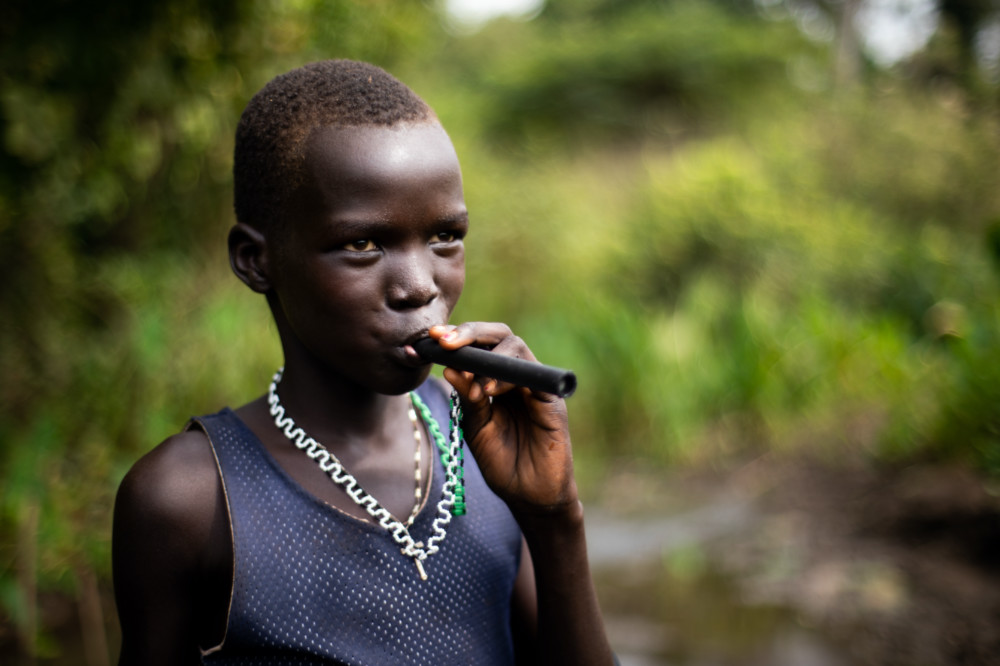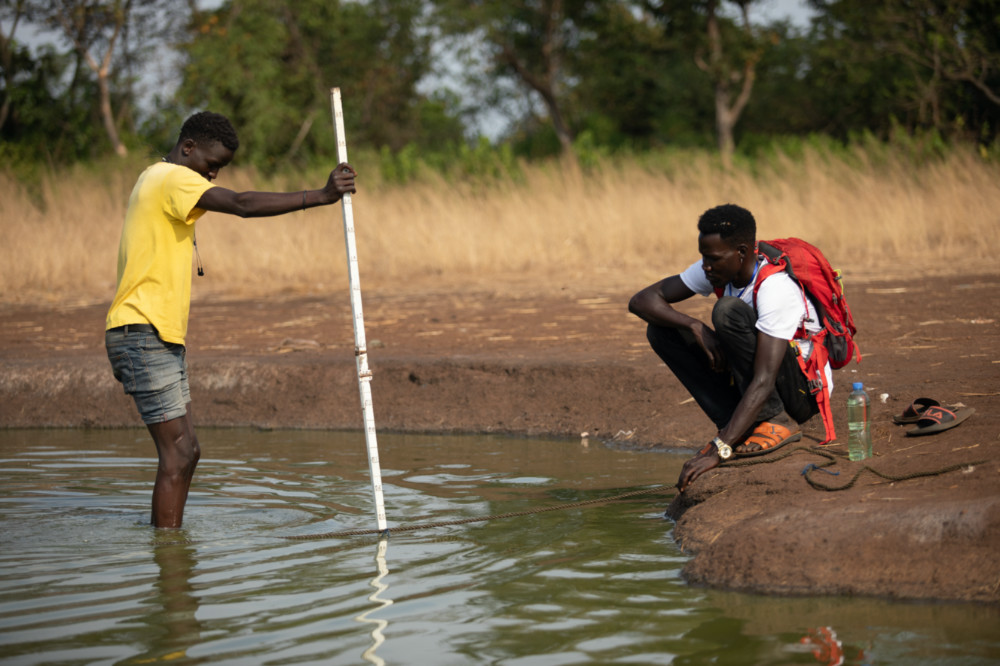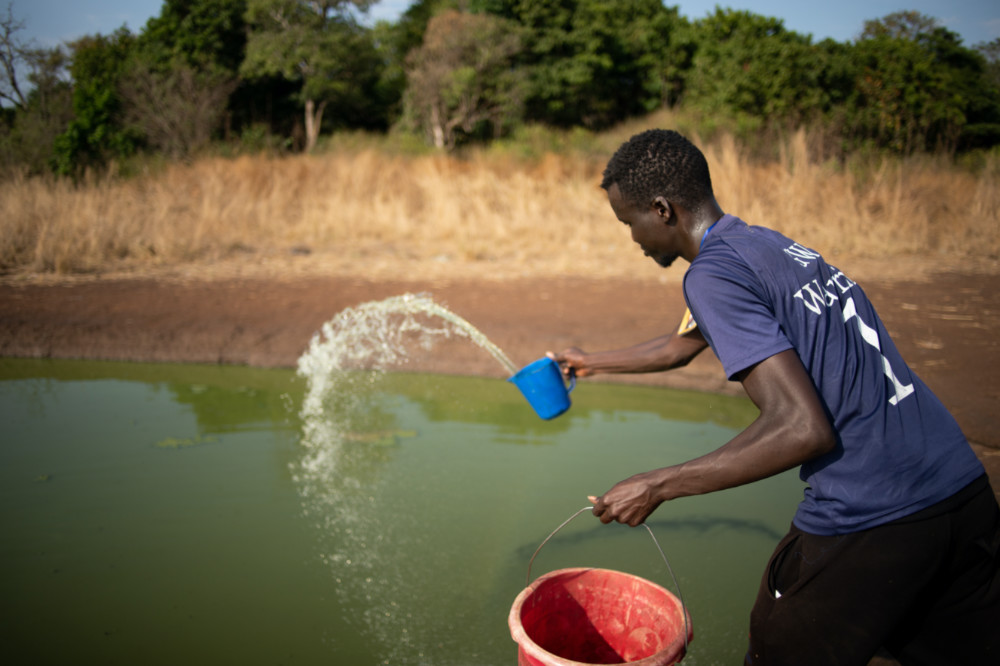
EMELINE WUILBERCQ, of Thomson Reuters Foundation, reports from Ethiopia on the fight to eradicate Guinea worm from water supplies…
Addis Ababa, Ethiopia
Thomson Reuters Foundation
Okello Aballa Ognum regularly has to walk deep into the jungles of south-west Ethiopia to treat the water ponds that harbour a debilitating parasitic disease.
Painstakingly, he measures the water volume to determine how much chemical treatment to use against copepods, the tiny water fleas that carry the Guinea worm larvae.
If ingested by humans, the larvae can grow up to a metre long before emerging through the skin, leading to serious disability and amputation in the worst cases.
Killing them is only part of Okello’s job – he also teaches the community about the dangers of drinking unfiltered pond water.
“We tell them we are [treating] the ponds, but we are not killing all the copepods,” the 24-year-old told the Thomson Reuters Foundation by phone from Gog district in Ethiopia’s Gambella region.
“Don’t think that since this pond was [treated], we can drink, it is free.”

A boy demonstrates how to use a pipe filter for drinking water to avoid getting guinea worm disease in Ethiopia’s Gambella region. PICTURE: CourtesyThe Carter Center.
Guinea worm afflicted 3.5 million people 35 years ago. But only 27 human cases were reported in 2020, most in Ethiopia and Chad, according to the Carter Center, the organisation set up by Jimmy Carter that leads the international eradication campaign.
That was 50 per cent less than in 2019 and the 96-year-old former US President has said he hopes to live to see the last case of Guinea worm, which would be only the second disease after smallpox to be eradicated in human history.
“The program doesn’t exist without community ownership, without community involvement and leadership. And the places where [it] has been the most successful…are where there were dynamic community leaders, dynamic community volunteers.”
– Adam Weiss, director of the Carter Center’s Guinea worm eradication program
Eradication of guinea worm is one of the goals the World Health Organization set out in January when it published its roadmap to tackle 20 neglected tropical diseases by 2030.
Together, these curable or preventable diseases affect more than 1.7 billion people in some of the world’s poorest countries, often severely disabling them and leaving them isolated and unable to earn a living.
Last year’s progress on Guinea worm came despite the impact on public health systems from the COVID-19 pandemic, which has hit efforts to tackle some NTDs, particularly where health workers were required to travel to sufferers.
Adam Weiss, director of the Carter Center’s Guinea worm eradication program, said the community-centered approach had been key to success in tackling a disease for which there is no vaccine or treatment.
“The program doesn’t exist without community ownership, without community involvement and leadership,” he said.
“And the places where [it] has been the most successful…are where there were dynamic community leaders, dynamic community volunteers.”

An Abate captain measures a water pond before the application of a safe larvicide that helps stop the Guinea worm life cycle in Ethiopia’s Gambella region. PICTURE: The Carter Center.
In Gambella, where 11 human cases were reported in 2020, dozens of community members like Okello have been mobilised to treat ponds, provide drinking water and raise awareness of the dangers of drinking contaminated water.
The disease disproportionately affects poor rural communities with no access to clean water and Guinea worm officers work with community leaders and volunteers, going house to house to look for suspected cases and distribute filters.
“We have to remember that this parasite is designed to survive. It’s found a way to sustain itself in populations that really are…beyond the end of the road,” said Weiss.
One major obstacle to progress in the last decade has been animal infections.
Chad went 10 years with no reported cases of Guinea worm before the disease suddenly reappeared in humans in 2010, apparently driven by dogs consuming raw fish and then infecting water sources.
Volunteers trained under the national eradication programme encouraged people to bury fish discards, while cash rewards are given to those who report infected animals and keep them away from water sources.
Ethiopia detected the worms in baboons in 2013, according to Kassahun Demissie, coordinator of the Ethiopian Dracunculiasis Eradication Programme.
“This makes it difficult to eradicate this disease because we don’t know the dynamicity of wild animal infections,” he said by phone.
Owar Ojulu Aballa, a field coordinator for the Carter Center in the Gambella region, pointed to another problem – poor villagers deliberately infecting themselves to get the 10,000 birr ($US240) compensation, a significant sum in one of Ethiopia’s most deprived areas
Now local teams seek to ensure the community takes precautions, from using filters to hiring pond guards and providing tankers of clean water.

One Abate captain applies a mild chemical that helps stop the Guinea worm life cycle in Ethiopia’s Gambella region. PICTURE: The Carter Center.
They can also count on villagers to help educate the community, such as Obang Odol Okello, 25, who was infected in April last year and was in severe pain until the worm was slowly removed by rolling it over a wooden stick.
The father of two was barely able to walk and could not grow his maize and sorghum or stop wild baboons from eating his crops, a painful experience that has helped him as a volunteer in the eradication program.
“I always take the time to show them what happened to me last year,” said Obang, who is paid 300 birr to go house-to-house and urges people to use the cloth and pipe water filters.
“To eradicate guinea worm disease right now, there must be safe water,” he said by phone from Ethiopia’s Gog district, saying the disease could be eradicated immediately if everyone had access to clean water.
“The end is in sight,” said the Carter Center’s Weiss. “But we also have to be mindful that more research, more investment in the communities, is required to overcome some of the last-mile challenges.”





